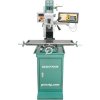Your watercooled system, that would be cool
In my line of work I use PC boards with mono LEDs. The liquid cooling I developed was for PCBs.
Then I was running thermal experiments and used CoBs to generate heat. That gave me an idea for cooling CoBs.
I like to put ideas on paper first. By paper in this case, I mean SVG graphics.
Basically the CoB's are mounted on a 0.062" thick bar of copper. The copper bar is in contact with a 1/2" water pipe for its entire length.
Water pipe costs about $0.80 per foot.
The cooper bar is under $2.00 per foot when purchased in single quantities.
I expect if I buy by the Ton, it will cost a lot less. Like one tenth, where it would be $0.20 per foot.
I originally was soldering the bar to the pipe. That was an ordeal. Closing the gap between the pipe and the bar was a problem.
I was going to make a die to hold the pieces in place and squeeze them in a vise.
Then I used some C-Clamps in a thermal experiment and this idea was born. The C-Clamps worked better than solder.
The screws and bracket replaced the C-Clamps.

Looking at the formula for heat transfer

q is the the thermal flux
k is the conductivity of copper (400)
A is the copper bar's cross sectional area .
In this case the heat is flowing through the copper bar so the Length is 0.062"
The Area is 1" x 15" (the 15" between CoBs)
Essentially, zero thermal resistance.
When I would touch the bar exactly opposite where the CoB is mounted I could not feel any heat what so ever with a water temp of 25°C with a 60 watt CoB.
This was how I clamped the pipe and bar together. I had a hard time getting the clamps to no fall off. That's why I had the extra copper between the clamp and bar.
I have since improved the clamping .
This was setup in my garage because I ran out of room in my lab.

The above pic was cropped from the below.
In this photo below, the case temperature of the CoB was 45 as seen on the meter. Now it's the same temp as the water.

I've tried all kinds of water reservoir setups but found this simple dual pump (in case one fails) works fine and is very inexpensive.
My first on is on the floor using 4" PVC. It was a monstrosity. I may still use the 4" PVC as the reservoir because I want a sealed system.
In this experiment I was using a 5 gallon bucket.
I may add a UV light to kill any algae or bio-organisms. Now I am using chlorine.

I may add something like this to cool the water.
Firsts I want to try an ice maker.
Ice water takes the case temperature below 25°C.
With a passive heatsink 100°C would be doing good.

I ordered this milling machine Friday to make the brackets and drill and tap the holes:













 Not at all - with my watercooled * coolmac - system * i`m able to rewin 60-65% of the inverted electr. power in form of hot water with an 80L heatexchanger (EUR 160,-). I use it in the bathroom and kitchen.
Not at all - with my watercooled * coolmac - system * i`m able to rewin 60-65% of the inverted electr. power in form of hot water with an 80L heatexchanger (EUR 160,-). I use it in the bathroom and kitchen.



 Imagine the way of the heat - outside of your chip.
Imagine the way of the heat - outside of your chip.